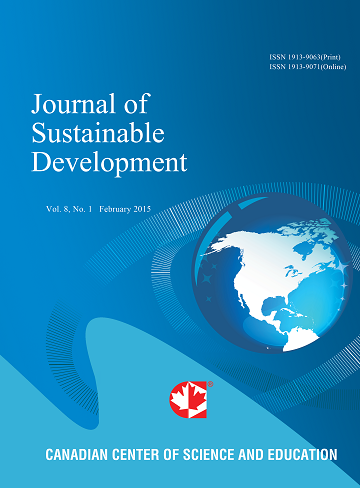Influencing Factors in the Adsorption of Chlorpyrifos on Various Substrates: Insights into Adsorbents, Mechanisms and Efficiency
- Clint Sutherland
Abstract
This narrative review examines recent advances in the adsorption of chlorpyrifos (CPF) from aqueous solutions, focusing on studies from the past decade. Significant progress has been made in developing high-performance adsorbents and optimising batch systems for single-contaminant removal. Solution pH consistently emerged as a critical factor, with optimal CPF adsorption typically occurring below neutral to just above the pKa of CPF pyridine ring (~3–4). Most studies used CPF concentrations relevant to industrial discharge, while nanogram-level concentrations typical of environmental contamination remain underexplored. Notable adsorption performance among carbon-based adsorbents was 132.0 mg/g in 10 min by a cellulose-derived carbon fibre. Among metal-organic frameworks, pAAm-g-XG/HKUST-1@Fe₃O₄ biopolymer reached 1708.7 mg/g in 15 min. The highest reported capacity was 1814.0 mg/g in 20 min using an amine-modified mesoporous silica SBA-15 hybrid composite. A promising emerging approach involved ultrasonic-assisted adsorption, which reduced equilibrium time from 50 to 10 min, highlighting the opportunity for further work into its scalability and performance in complex wastewaters. Detailed mechanistic studies reveal an interplay of hydrophobic interactions, electrostatic attraction, π-π stacking and hydrogen bonding. However, the depth of the study varied markedly among researchers. Desorption studies reported promising reusability (up to 10 cycles with <5% efficiency loss), but long-term impacts and the effects of real-world wastewater remain underexplored. Key gaps persist in thermodynamic analyses, detailed mechanistic elucidation, and the integration of statistical tools (e.g., response surface methodology) to enhance optimisation. Scalability is a significant challenge, with targeted research needed to address particle enlargement and structural modifications for industrial applications.
- Full Text:
 PDF
PDF
- DOI:10.5539/jsd.v18n4p47
Journal Metrics
h-index (2017): 33
i10-index (2017): 81
h5-Index (2017): 18
h5-Media (2017): 25
Index
- Academic Journals Database
- ACNP
- AGRICOLA
- ANVUR (Italian National Agency for the Evaluation of Universities and Research Institutes)
- Berkeley Library
- CAB Abstracts
- CNKI Scholar
- COPAC
- CrossRef
- DTU Library
- EBSCOhost
- Elektronische Zeitschriftenbibliothek (EZB)
- EuroPub Database
- Excellence in Research for Australia (ERA)
- Genamics JournalSeek
- GETIT@YALE (Yale University Library)
- Ghent University Library
- Google Scholar
- Harvard Library
- INDEX ISLAMICUS
- Infotrieve
- Jisc Library Hub Discover
- JournalGuide
- JournalTOCs
- LOCKSS
- Max Planck Institutes
- MIAR
- Mir@bel
- NewJour
- Norwegian Centre for Research Data (NSD)
- Open J-Gate
- PKP Open Archives Harvester
- Pollution Abstracts
- Publons
- Pubmed journal list
- RePEc
- ROAD
- SafetyLit
- Scilit
- SHERPA/RoMEO
- Standard Periodical Directory
- Stanford Libraries
- UCR Library
- Ulrich's
- UniCat
- Universe Digital Library
- UoS Library
- WJCI Report
- WorldCat
- WorldWideScience
- Zeitschriften Daten Bank (ZDB)
Contact
- Sherry SunEditorial Assistant
- jsd@ccsenet.org
